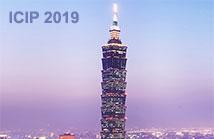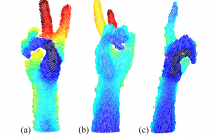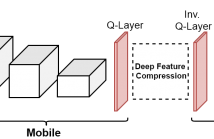
The International Conference on Image Processing (ICIP), sponsored by the IEEE Signal Processing Society, is the premier forum for the presentation of technological advances and research results in the fields of theoretical, experimental, and applied image and video processing. ICIP has been held annually since 1994, brings together leading engineers and scientists in image and video processing from around the world. Visit website.

- Categories:
 72 Views
72 Views
- Read more about DuoDepth: Static Gesture Recognition with Dual Depth Sensors
- Log in to post comments
Static gesture recognition is an effective non-verbal communication channel between a user and their devices; however many modern methods are sensitive to the relative pose of the user’s hands with respect to the capture device, as parts of the gesture can become occluded. We present two methodologies for gesture recognition via synchronized recording from two depth cameras to alleviate this occlusion problem.
- Categories:
 51 Views
51 Views
- Read more about CONTEXT-AWARE AUTOMATIC OCCLUSION REMOVAL
- Log in to post comments
Occlusion removal is an interesting application of image enhancement, for which, existing work suggests manually-annotated or domain-specific occlusion removal. No work tries to address automatic occlusion detection and removal as a context-aware generic problem. In this paper, we present a novel methodology to identify objects that do not relate to the image context as occlusions and remove them, reconstructing the space occupied coherently.
- Categories:
 17 Views
17 Views
- Read more about CNN-BASED LUMINANCE AND COLOR CORRECTION FOR ILL-EXPOSED IMAGES
- Log in to post comments
Image restoration and image enhancement are critical image processing tasks since good image quality is mandatory for many image applications. We are particularly interested in the restoration of ill-exposed images. These effects are caused by sensor limitation or optical arrangement. They prevent the details of the scene from being adequately represented in the captured image. We proposed a deep neural network model due to the number of uncontrolled variables that impact the acquisition.
PPT_ICIP.pdf
- Categories:
 58 Views
58 Views
- Read more about CLOUDMASKGAN: A CONTENT-AWARE UNPAIRED IMAGE-TO-IMAGE TRANSLATION ALGORITHM FOR REMOTE SENSING IMAGERY
- Log in to post comments
Cloud segmentation is a vital task in applications that utilize satellite imagery. A common obstacle in using deep learning-based methods for this task is the insufficient number of images with their annotated ground truths. This work presents a content-aware unpaired image-to-image translation algorithm. It generates synthetic images with different land cover types from original images while preserving the locations and the intensity values of the cloud pixels. Therefore, no manual annotation of ground truth in these images is required.
- Categories:
 47 Views
47 Views
- Read more about Graph Regularization Network with Semantic Affinity for Weakly-supervised Temporal Action Localization
- Log in to post comments
This paper presents a novel deep architecture for weakly-supervised temporal action localization that predicts temporal boundaries with graph regularization. Our model not only generates segment-level action responses but also propagates segment-level responses to
neighborhood in a form of graph Laplacian regularization. Specifically, our approach consists of two sub-modules; a class activation
module to estimate the action score map over time through the action classifiers, and a graph regularization module to refine the
- Categories:
 25 Views
25 Views
- Read more about EMBEDDED CYCLEGAN FOR SHAPE-AGNOSTIC IMAGE-TO-IMAGE TRANSLATION
- Log in to post comments
- Categories:
 26 Views
26 Views
- Read more about SHOW, TRANSLATE AND TELL
- Log in to post comments
Humans have an incredible ability to process and understand
information from multiple sources such as images,
video, text, and speech. Recent success of deep neural
networks has enabled us to develop algorithms which give
machines the ability to understand and interpret this information.
There is a need to both broaden their applicability and
develop methods which correlate visual information along
with semantic content. We propose a unified model which
jointly trains on images and captions, and learns to generate
STT_v5.pdf
- Categories:
 18 Views
18 Views
- Read more about HARDWARE-FRIENDLY COMPRESSIVE IMAGING BASED ON RANDOM MODULATIONS & PERMUTATIONS FOR IMAGE ACQUISITION AND CLASSIFICATION
- Log in to post comments
- Categories:
 18 Views
18 Views
- Read more about MULTI-TASK LEARNING WITH COMPRESSIBLE FEATURES FOR COLLABORATIVE INTELLIGENCE
- Log in to post comments
A promising way to deploy Artificial Intelligence (AI)-based services on mobile devices is to run a part of the AI model (a deep neural network) on the mobile itself, and the rest in the cloud. This is sometimes referred to as collaborative intelligence. In this framework, intermediate features from the deep network need to be transmitted to the cloud for further processing. We study the case where such features are used for multiple purposes in the cloud (multi-tasking) and where they need to be compressible in order to allow efficient transmission to the cloud.
ICIP_2019.pptx
- Categories:
 49 Views
49 Views